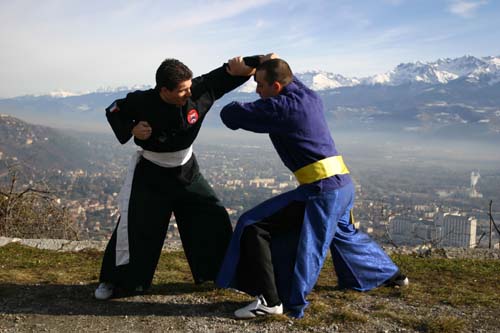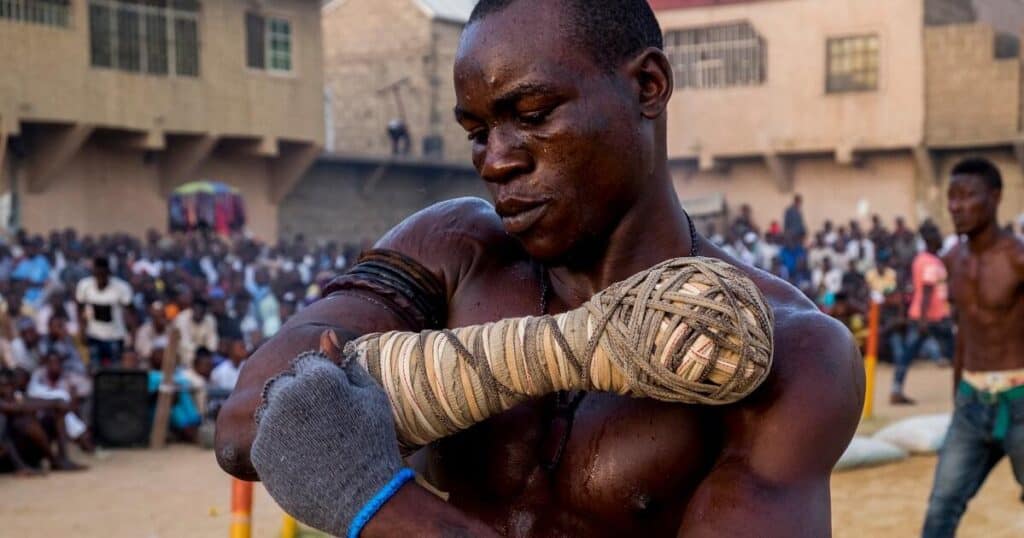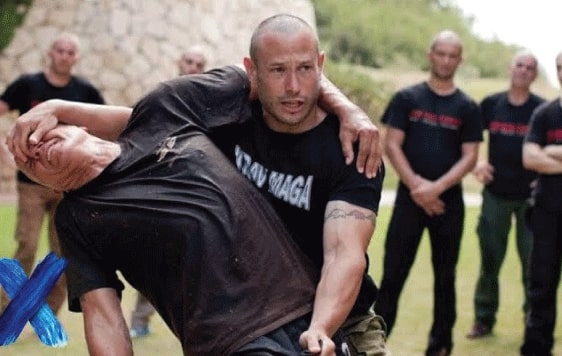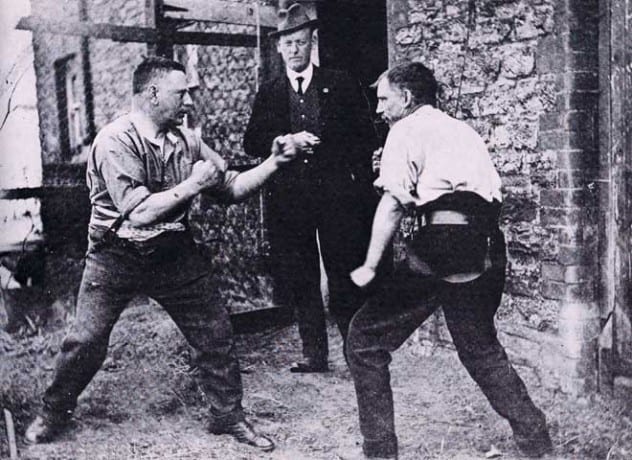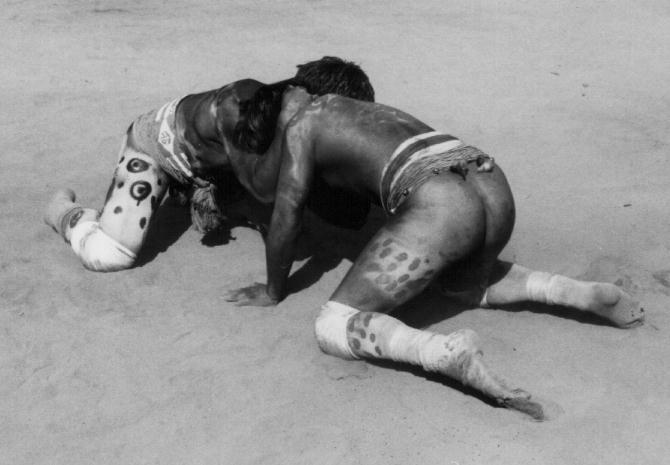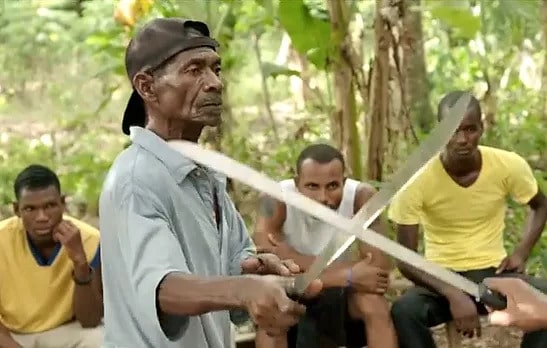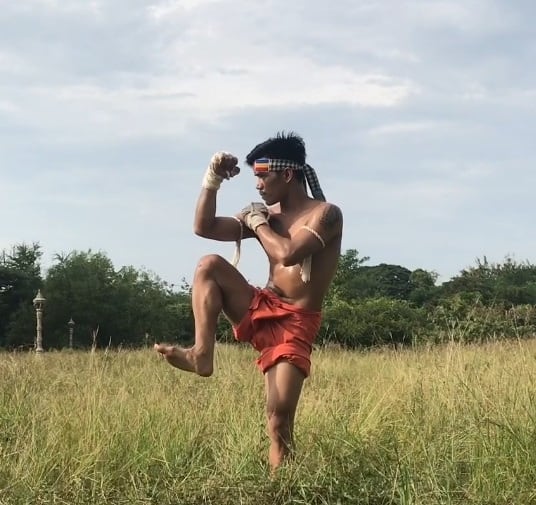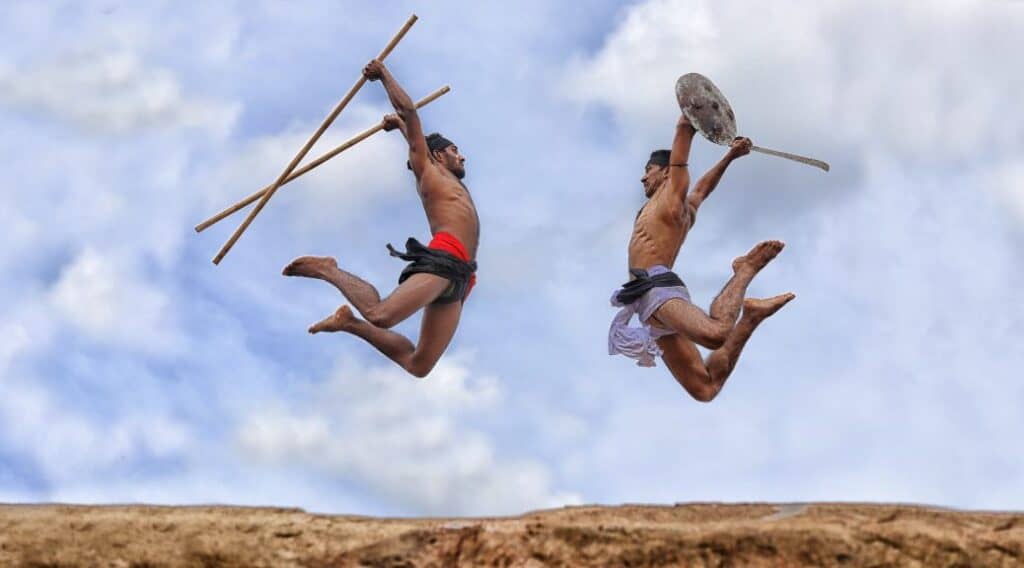Martial arts have been in existence for thousands of years. Various forms and styles have emerged in different parts of the world. Some of them have stood the test of time, while others are lost in obscurity.
The lack of historical documentation makes it challenging to trace the development and progression of various forms of martial art. Additionally, throughout history, the masters and their disciples have guarded the secrets related to different styles to preserve their religious and spiritual purity.
Here we list 8 of the rare martial art forms you have probably never heard of.
8. Bando
Country of origin: Myanmar
Style: Defensive unarmed combat
Weapons used: NA

photo source: wikipedia.org
Bando is a traditional multi-faceted martial art form that originated in Myanmar (erstwhile Burma). The history of the bando is somewhat obscured, but it is believed that the origin of this art form can be traced back to 1000 AD.
Bando prioritizes defense over offense and focuses on countering impending attacks. The moves are heavily focused on counter maneuvers. It is an unarmed combat method. Feet, elbows, head, and shoulders are used for attacking the opponent.
Various animal movements are incorporated into this art form; especially, the offensive forms are based on the movements of animals such as Eagle, Boar, Leopard, Python, Cobra, Viper, Black Panther, and others.
Did you know?
Traditional Burmese martial art systems are collectively called Thaing. Three generations of Thaing are known as Kanbawza, Inwa, and Yamanya.
7. Dambe
Country of origin: Nigeria
Style: Unarmed kicking and punching
Weapons used: NA

photo source: sidekickboxing.co.uk
Dambe is a traditional martial art form practiced by the Hausa people from Nigeria. It is believed that the history of Dambe goes back to the 10th century.
Butchers and fishermen from the community would participate in Dambe tournaments during the harvest festival across Northern Nigeria, Southern Niger, and southwestern Chad.
Dambe fights are held outdoors on the sand. There are only a few rules to follow. Each match consists of three rounds, but no time limit is there. One round ends when one fighter places his knees on the ground or falls to the ground. Participants or officials can also call a halt to end a round.
The strong-side hands of the participants are wrapped in a piece of cloth. This hand is called the spear. The other hand is called the shield, which can be used for grabbing or holding. A chain is often looped around the lead leg.
Fighters can use this leg for defense as well as offense. The participants are allowed to use their unwrapped back legs to kick the opponent.
In 2019, the Federal Ministry of Youth and Sports Development of Nigeria took initiatives to popularize Dambe outside the country by organizing international tournaments. However, due to the pandemic, the plan had to be put on hold.
Did you know?
In the past, the fighters would cover their strong-side hands with sticky resin mixed with shards of broken glass. However, later this practice was outlawed.
6. Bakom
Country of origin: Peru
Style: Close combat with hidden weapons
Weapons used: Sticks, knives, swords, machetes, etc.

photo source: top10-technologies
Bakom or Bacom is one of the most lethal martial art forms ever created. It is a hybrid martial art form developed on the streets of Lima, the capital of Peru. The style was formalized in the early 1980s by former marine and jujutsu master Roberto Puch Bezada.
Components of street fighting are combined with the techniques of jujutsu to craft this martial art.
The fighters aim to inflict the maximum amount of pain on the opponent within the shortest span of time. The offensive moves are designed to ruin the balance of the opponent.
Fighters use extreme strikes and hidden weapons to attack opponents. The fights often end in the death of one of the participants.
Did you know?
Bezada was a former convict from Villa el Salvador. He developed the Bakom technique for the use of Peruvian armies.
5. Rough and Tumble
Country of origin: USA
Style: Unarmed brutal disfiguring techniques
Weapons used: NA

photo source: listverse.com
Rough and Tumble is not a formalized style or technique, unlike many other martial art forms on this list. However, it was very popular in the rural US in the 18th and 19th centuries.
This martial art form was particularly widespread in the southern states. It was often used for settling up disputes.
Rough and Tumble fight is characterized by utmost brutality. It was fought without rules, and the participants employed violent offensive techniques like gouging, biting, and hitting the groin area.
All the matches would end with bleeding and severe injuries. Death was also not uncommon.
Did you know?
Rough and Tumble matches were banned in the state of Virginia in 1752. Many other states did the same in the following years.
4. Huka-huka
Country of origin: Brazil
Style: Wrestling
Weapons used: NA

photo source: wikipedia.org
Huka-huka is a traditional wrestling style that originated in Brazil. This martial art is practiced by the indigenous people of Xingu in the state of Mato Grosso.
Huka-huka is performed as a part of the funeral rituals of the Xingu people.
The participants sit on their knees before the commencement of the fight. The fighters begin rotating around each other in a clockwise direction facing the opponent when the owner of the fight calls his opponents by name.
The fighters then grapple with each other. The aim is to lift the opponent and knock them to the ground.
Both men and women from the Xingu community participate in this ritualistic martial art.
Did you know?
Techniques used in Huka-huka were experimentally introduced in the training program of the Sao Paulo State Military police.
3. Tire Machèt
Country of origin: Haiti
Style: Fencing with machetes
Weapons used: Machete

photo source: static.wixstatic.com
Tire machèt is Haitian martial art that has its origin in the Haitian Revolution of 1791-1804. The style was developed by the slaves and free blacks during the late 1790s.
They combined the traditional African combat systems with historical European fencing to craft this unique martial art form.
The rebel slaves hardly had any weapons except for their machetes that they used to cut sugarcane. Techniques of tire machèt helped them to defeat the French colonial army.
Did you know?
The practices of tire machèt have been kept a secret for many years. It was in 2014 when the Haitian master fencer Alfred Avril opened up his practice to the world for the first time.
2. Bokator
Country of origin: Cambodia
Style: Close-quarter combat system
Weapons used: bamboo staff, sword, short sticks

photo source: wikipedia.org
Bokator is one of the oldest existing martial art forms originating in Cambodia. According to the oral traditions, Bokator was crafted by the ancient Khmer armies before Angkor was founded.
Hand-to-hand combat is at the core of this martial art. It is also characterized by the heavy use of weapons. The art form includes 341sets. Like many other ancient martial art forms that originated in Aisa, various moves used in Bokator are based on animal movements.
The practitioners still wear the traditional uniforms of ancient Cambodian armies. A scarf, traditionally called the krama, is folded around the combatant’s waist. Additionally, blue and red silk cords called sangvar are tied around the biceps and heads.
The colors of krama differ according to the level of the practitioner, something similar to belts in karate.
Did you know?
During the Pol Pot regime from 1975 to 1979, all the traditional art practitioners, including bokator masters, were systematically exterminated. Only a few bokator practitioners managed to hide or flee Cambodia. One of them was San Kim Sean, who almost single-handedly revived the art form. He is regarded as the father of modern bokator.
1. Angampora
Country of origin: Sri Lanka
Style: Hand-to-hand fighting involving the use of indigenous weapons
Weapons used: knives, swords, and staves

photo source: www.classicsrilanka.com
Angampora is the least practiced and rarest martial art in the world. Natives of the Sri Lankan Islands created this martial art thousands of years ago to protect their community.
Angampora combines various combat techniques with meditation, self-defense, and exercise.
Striking and grappling techniques are used by the fighters to attack the pressure points of the opponent. The aim is to inflict pain or even paralyze the opponent.
One participant is declared the winner once they catch the opponent in a submission lock, making them unable to escape.
Indigenous weapons such as swords, knives, and staves are used, but the usage is discretionary.
Did you know?
In 1817, the practice of Angampora was banned by the British colonizers. It resurfaced after over a century when Sri Lanka became a sovereign country. Several initiatives have been taken by the Sri Lankan government to rejuvenate the art form.

